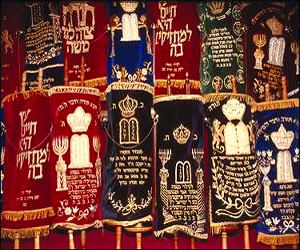Tzfat, The City of Kabbalah
Mystical City
These days, one of the most often-heard questions among tourists to Tzfat is "was Madonna here"?
Madonna, the pop-rock icon who is well-known for her study of Jewish mysticism, has made no secret of her fascination with Kabbalah, the "secrets" that are embedded in the Torah, or the Five Books of Moses. Madonna did indeed visit Tzfat, though she did so in the dead of the night several years ago when her chances of being seen and recognized would be low. After all, it is unlikely that the ultra-Orthodox residents of Tzfat who might be coming to or from prayers in the wee hours of the morning would know, or care, who Madonna is.
The new interest in the study of Jewish mysticism, popularized by Madonna and her Hollywood friends, has put Tzfat on the map as the "City of Kabbalah". Few, however, know why this is.
History of Kabbalah
Two thousand years ago, when the Roman army occupied the Land of Israel (then called by its Roman name, "Palestine"), one of the leading Rabbis who spoke out against the Roman rule was Rabbi Shimon Bar Yochai. Not surprisingly, the Romans issued a death decree against the Rabbi, and together with his son, Rabbi Elazar, Rabbi Shimon Bar Yochai fled to a cave near the northern town of Peki'in to hide.
During these years of hiding, Rabbi Shimon was taught, through divine inspiration, the secrets which are hidden in the Torah. These secrets, it is believed, if properly understood, allow man to better understand G-d's essence, and allow man to strengthen his relationship with G-d and his fellow man. When the death decree against Rabbi Shimon was revoked by the Romans, Rabbi Shimon began to travel throughout the North of Israel, teaching these secrets, which he had collected into the Book of Zohar.
Kabbalah and Tzfat
Throughout the next millennium, the study of Kabbalah was limited to a few select scholars of each generation. In the Middle Ages, many of these scholars made their way to Israel after the Spanish Expulsion of 1492, and of those, many came to Tzfat, which was believed to have a special connection to Kabbalah because of its proximity to the area where Rabbi Shimon had taught, as well as to Rabbi Shimon's gravesite, on Mt. Meron. Among these scholars, Rabbi Isaac Luria, the ARI, came to Tzfat and he expanded Kabbalah study to new heights. After the death of the ARI, his students developed his teachings, and until today, the Kabbalah that is studied throughout the world is Luranic Kabbalah, named for the Rabbi who directed the system which would become the dominate genre of Kabbalah study throughout the world.
In Kabbalistic tradition, the Four Holy Cities of Judaism are each believed to embody an element of Nature.
Jerusalem is earth
Tiberias is water.
Hebron is fire
Tzfat is air
Anyone who has ever spent any amount of time in Tzfat can certainly tell you why this is so!

